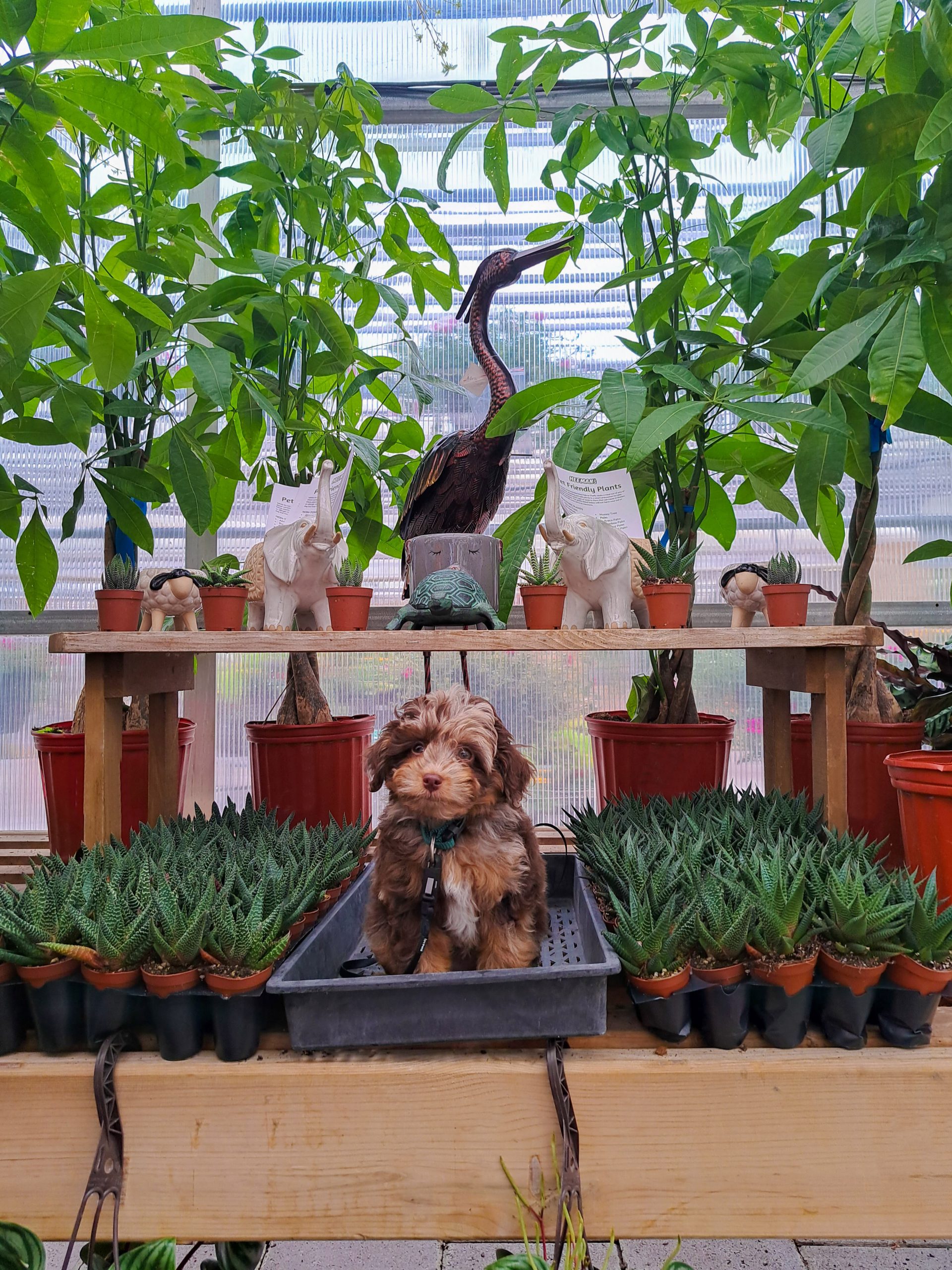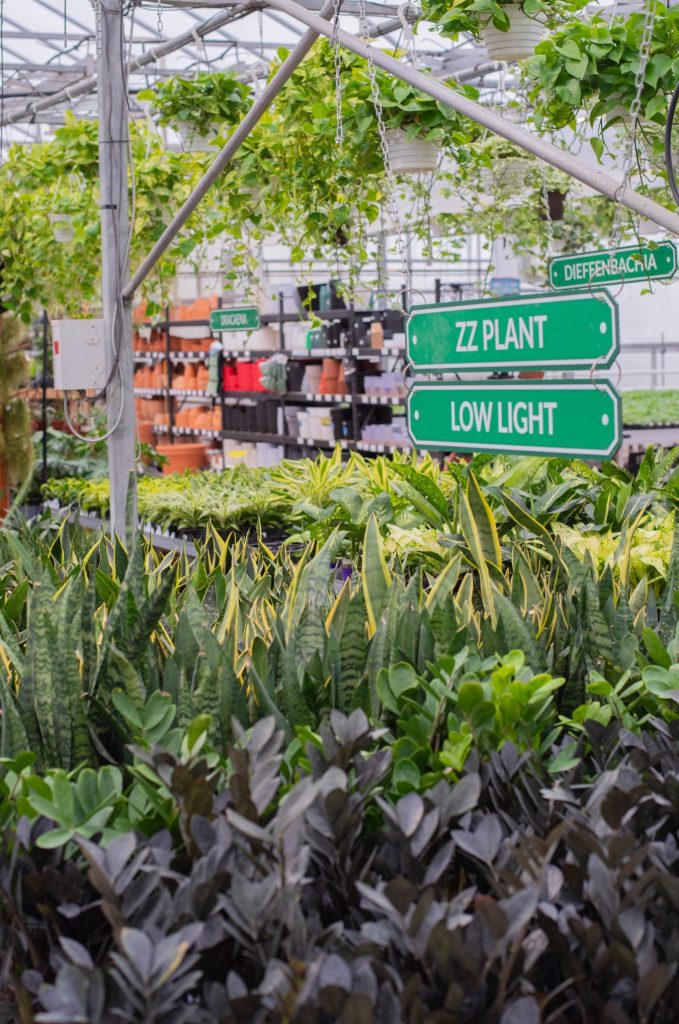
Ultimate Houseplant Lighting Guide
Gaining experience in indoor gardening includes a lot of trial and error. Gardening is an art, not a science so we’re bound to make a mistake here or there – maybe even lose a plant or two (or more) along the way as we learn. One of the most important aspects of keeping houseplants happy is lighting. All plants need some amount of light to survive, but when you understand the difference between lighting conditions, and how to tell what type of light you have, you can choose plant friends that will thrive in your home!
Why is Light Important?
Plants have the amazing ability to convert sunlight into energy that they use to grow – and lucky for us with an amazing byproduct of oxygen in the process! This process is referred to as, you guessed it, photosynthesis. If your plants aren’t getting enough light, they won’t have enough energy to grow and will try to conserve the little energy they do have by dropping leaves and slowly dying.
Seasonality of Light
Because we live in the northern hemisphere, the sun is closest to us and most directly overhead during the summer months with nice long days; however, the sun gets farther away and lower in the sky giving us shorter days during the winter months. This also means that as the seasons shift and the path the sun takes changes, so will the light in your home. Something that thrives in one spot all summer may need to be moved or supplemented with artificial light for a few of the darker months of the year.

Types of Natural Indoor Light
Direct Light:
Direct light is when the plant can see the sun directly for the majority of the day. There is nothing standing in the way of those sunbeams from hitting plant leaves. Go ahead and look out the window from your plants location to figure this out. It might look funny but it’s helpful and we don’t judge! If you look out the window from your plants vantage point and you’d need sunglasses to protect your eyes because you look right at the sun, this is a direct light exposure. Some plants love basking in the rays because that is the environment their wild plant ancestors evolved in.
Plants that like direct light: Citrus, Jade, Croton, Bird of Paradise, Herbs, Aloe, Succulents, Cacti and Jasmine are perfect for sitting directly in front of super sunny windows.
Bright Indirect Light:
“Bright indirect light” is something that can be seen on a lot of care tags for indoor plants. It’s usually a bright and steady type of light. Commonly this exposure is found in a spot where the plant can easily see a window and the light outside but never actually looks directly at the sun. Think of plants that originate from tropical places where there are tall trees and some other foliage that gives them some protection throughout the day. Plants that prefer indirect light may not thrive in the heat from direct rays on a hot summer day for example.
Plants that like indirect light: Honestly…most of them! Monstera, Fiddle Leaf Fig, Rubber Tree, Umbrella Tree, Dracaena, Philodendron, Pothos, Calathea
Low Light:
If your plant can only see a sliver of the sky, or none at all, it’s a low light spot. Anything that is more than about 7 feet from a window could be considered low light as well. Plants will rarely thrive in low light conditions, but there are some that will tolerate it.
Plants that tolerate low light: Cast Iron, Snake Plant, ZZ Plant, Silver Chinese Evergreens (ones with grey/green foliage), some Pothos
Testing for Light Exposure
There are a couple of ways you can test for light exposure in any specific spot. Our favourites are putting yourself in your plants pot (also referenced above) and the shadow test!
Be the plant: Put your face where you want to place your plant and look at the window. If you look directly at the sun for a few hours throughout the day, you have direct light. If you see lots of unobstructed sky but not a lot of sun (or morning sun only) you have indirect light. No sky? It’s definitely a low light spot.
Check the shadows: On a sunny day, hold up a piece of white paper where you would like to place your plant. Hold your hand about a foot away, between the paper and the light source and look at the shadow:
- If the shadow has crisp edges and is well defined, the spot receives bright light.
- If the shadow is fuzzy, but still recognizable as your hand, the spot receives medium light.
- If you see only a faint shadow and you don’t really see defined fingers, the spot only receives low light.
- If you can’t make out a shadow, that spot is like deep shade, and maybe a faux friend or supplemental lighting is the best choice for this location.
Window Exposure
Knowing which way your window faces is a good starting point for understanding the type of light that comes through it. And plant placement matters as well – the closer to the window the more light the plant will get. What is outside your window is important as well…big trees, buildings next door, awnings, curtains, etc. can reduce light levels even when you have a big beautiful south facing window for example – so keep that in mind.
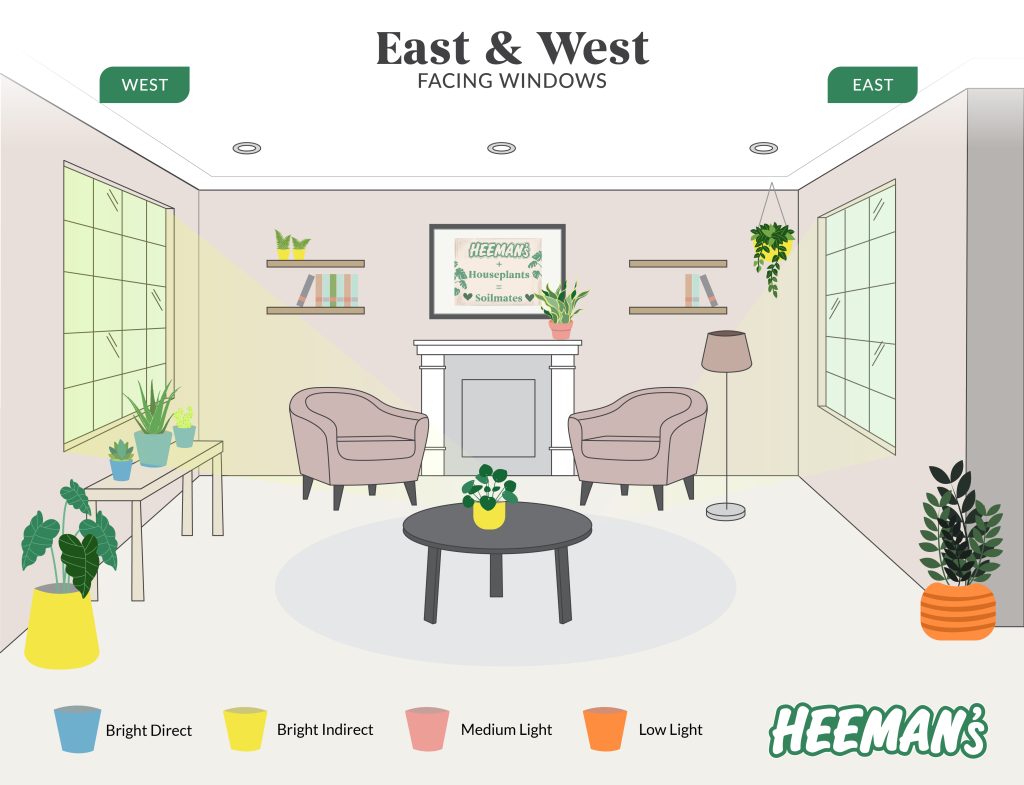
East Facing Windows:
Medium to Bright Indirect Light
Any window that can see the sun rising has Eastern exposure of some sort with soft morning light. Plants that like indirect bright light can usually tolerate direct morning light as it’s gentler (but you still need to keep an eye on plants during the sunnier summer days to ensure it’s not getting to be too much).
West Facing Windows:
Medium to bright indirect light in the morning, direct light in the afternoon
Any window that can see the sun setting has Western exposure of some sort. There is lots of afternoon light which is both good and bad, as afternoon sun is stronger and can be harsh; keep this in mind when choosing plants that aren’t back a bit from the window. A sheer curtain drawing in the mid afternoon can be a good solution for diffusing the light if needed.
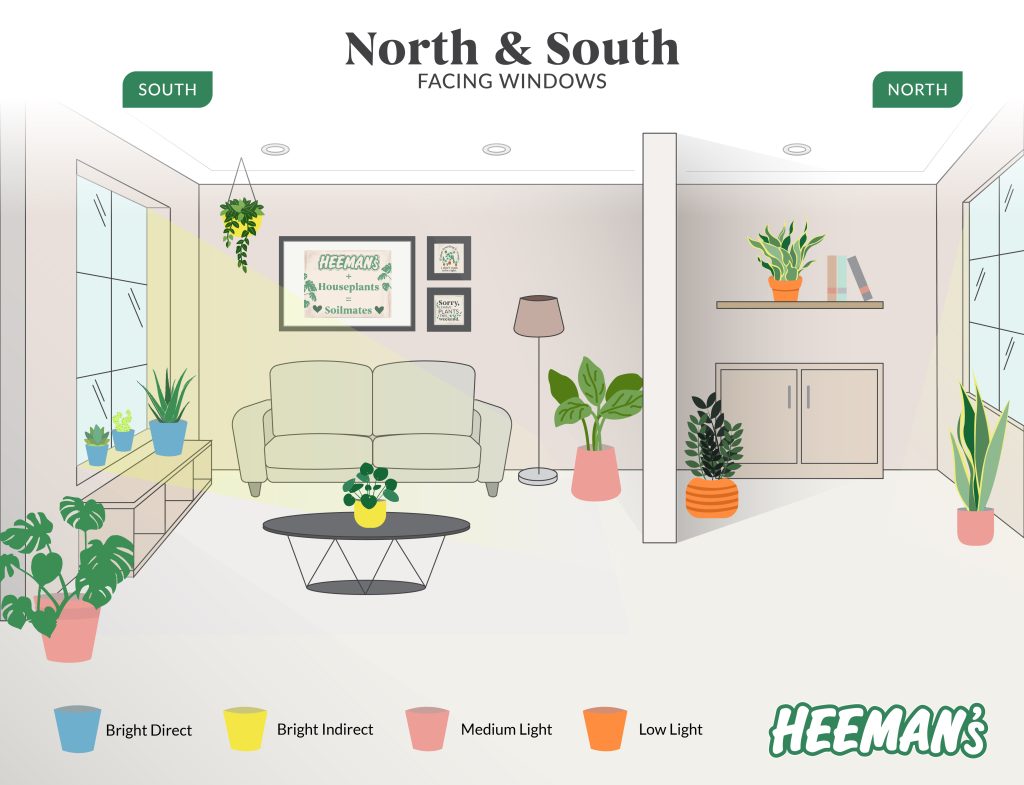
North Facing Windows:
Low to medium, indirect light
Looking out a north facing window, you will never see the sun directly. The light is always a soft and consistent indirect light that is best suited for plants with medium to low light needs. If you’re looking to put plants with more light requirements in a room with northern exposure, you can consider supplemental artificial plant lighting.
South Facing Windows:
Bright indirect light to direct sun
All plant parents are jealous of people with south facing windows. Plants can be placed further back from the widows and still receive enough light to thrive! If you find that the sun is too bright, a sheer curtain can help turn that direct light into indirect light for a wider variety of suitable plants.
Plant Light Problems
If you see yellow or dropping leaves or your plant starts to stretch and grow longer spindly stems, this might be a sign that it wants more light. Don’t be afraid to try a bit of a musical chairs with your plants and try a different position in the room closer to a window, a different room, or adding a supplemental lamp nearby.
If you notice the leaves getting crispy or browning that might mean too much light and you should move your plant back from the light source.
Choosing the right plant for the lighting you have in your home is easy once you understand these basics!
Plant List by Light Requirements
We’ve rounded up some of the most popular plants for different types of light. Some plants can actually tolerate a wide range of conditions such as the snake plant. Most people think of it as a low light plant, but it would actually love a bright sunny spot, so you will see it on multiple lists. A note about low light is that plants typically don’t thrive in low light conditions; some will tolerate it better than others.
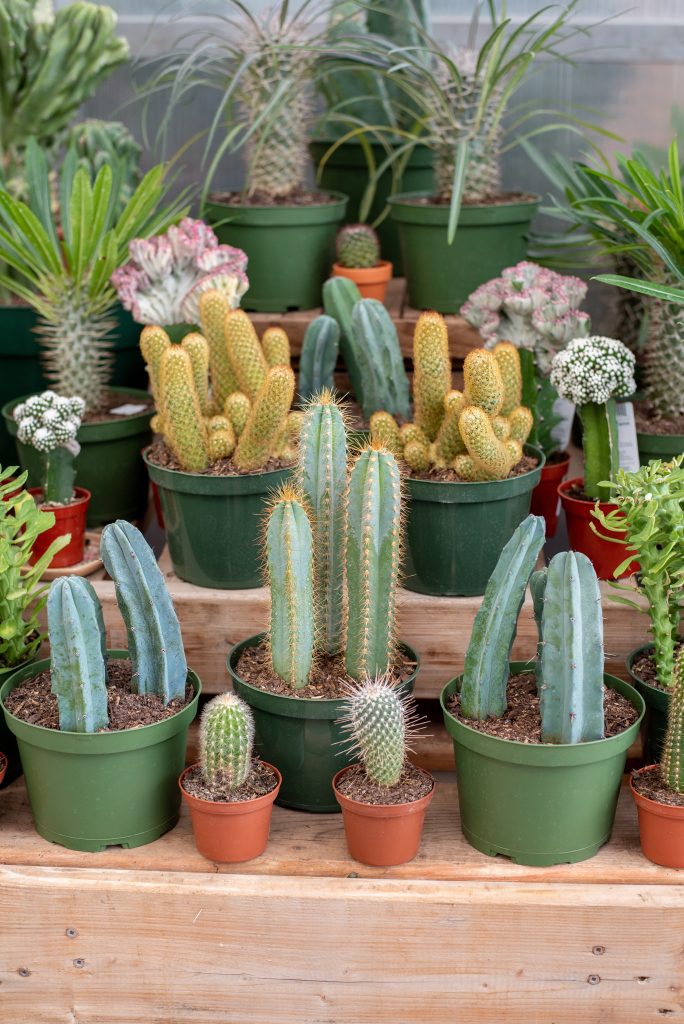
Plants for Direct Light
Desert Cactus varieties (pictured here) | Jade | Aloe Vera | Croton | Yucca | Bird of Paradise | Ponytail Palm | String of Pearls | Snake Plant | Herbs such as Basil | Citrus Trees | Olive Trees

Plants for Bright Indirect Light
Fiddle Leaf Fig (ficus pictured here) | Bird of Paradise | Dracaena | Rubber Tree | Monstera | Snake Plant | Schefflera | Philodendron | Pothos | Calathea | Diffenbachia | Chinese Evergreens

Low Light Tolerant Plants
Snake Plant (pictured here) | Cast Iron | ZZ Plant | Chinese Evergreens (silver varieties) | Parlour Palm | Golden Pothos | Spider Plant | Ferns | Ivy | Peace Lily

